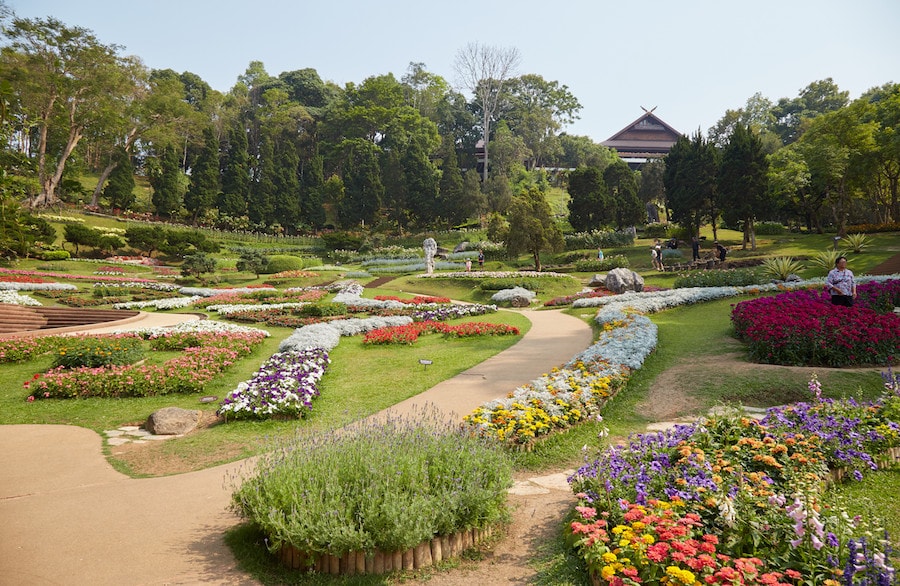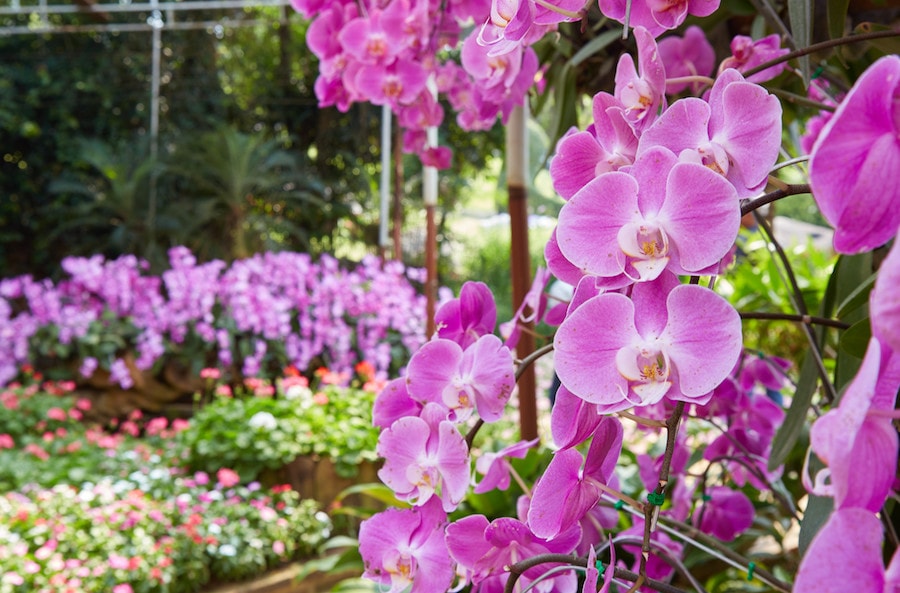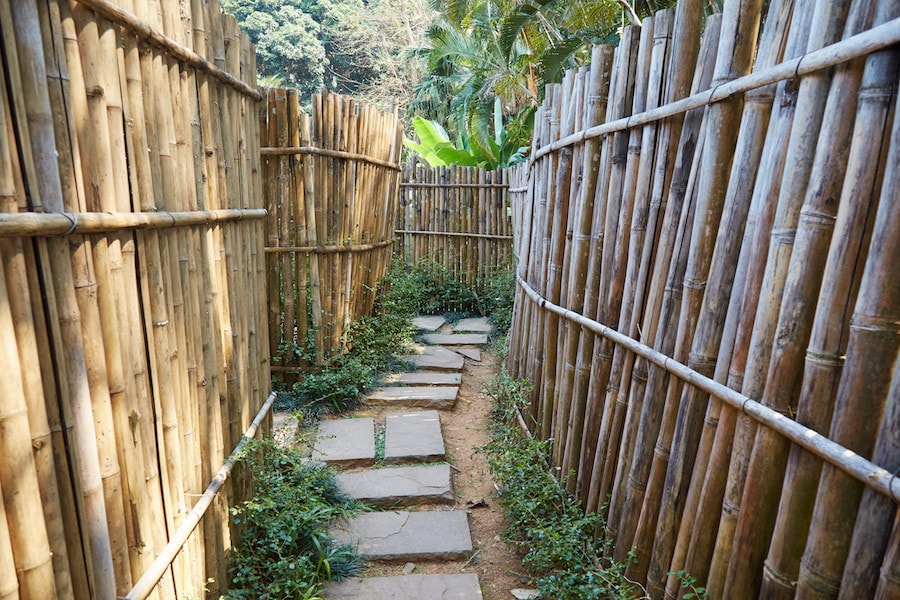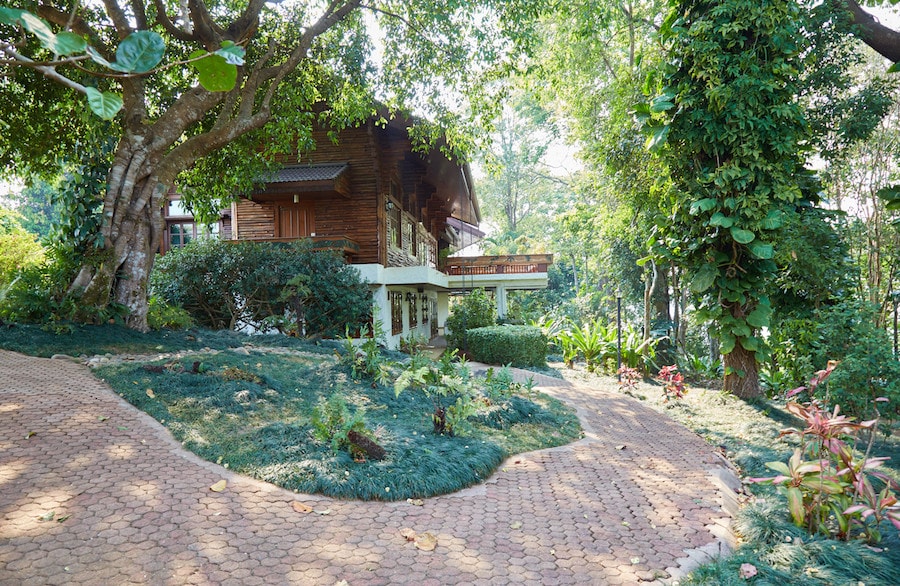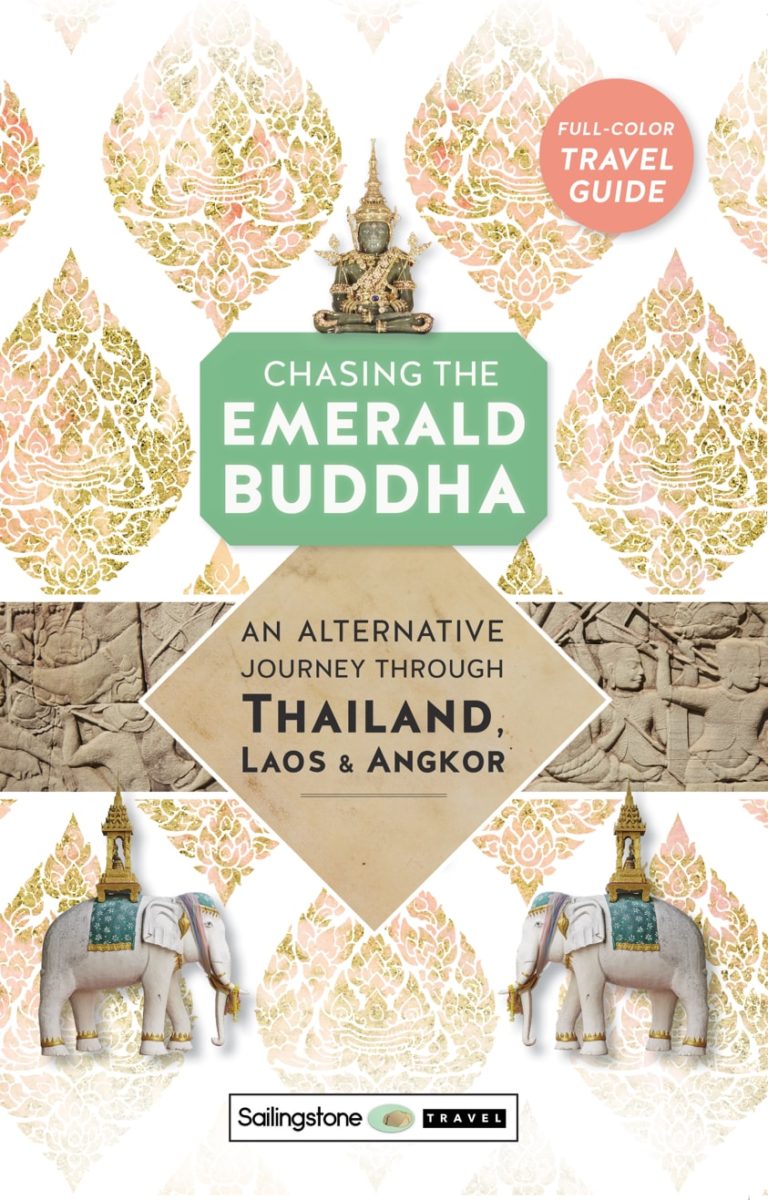Last Updated on: 27th January 2020, 05:47 pm
Overlooking the mountains of neighboring Myanmar, Doi Tung’s Mae Fah Luang Botanical Gardens are home to a gorgeous array of plants and flowers from around the world. The well-kept gardens also act as a refuge for those eager to escape the stifling heat of central Chiang Rai. Walking amongst the sculpted landscape, it’s hard to imagine what the scene may have looked like just a few decades ago. The troubled and complicated backstory of the region involves numerous geopolitical struggles, weapons smuggling and a once-thriving opium trade.
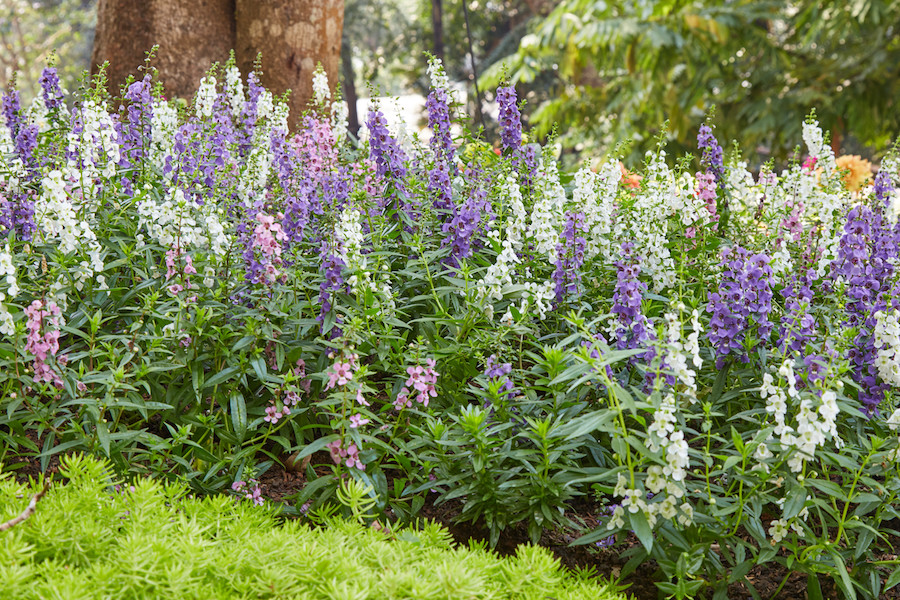
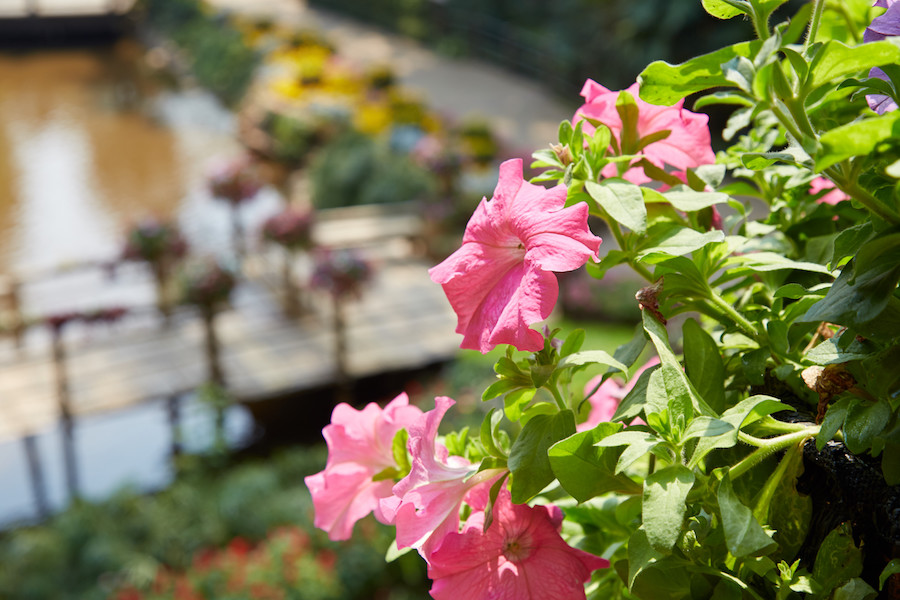
A Former Akha Village
The Mae Fah Luang gardens are situated on what was once an Akha village called Pa Kluay. The Akha people are one of many indigenous groups native to northern Thailand, in addition to parts of both Myanmar and Laos. In Thailand, these groups are often collectively referred to as “hilltribes.”
And like many hilltribes, the Akha’s society and economy has been traditionally based around agriculture. They’ve long grown things like soybeans and rice, but throughout the 20th century their biggest cash crop was opium.
The Akha and other hilltribes traditionally used opium for minor aches and ailments, such as tooth and stomachaches. But as cultivation soared, so did addiction epidemics in the local communities.

The Akha people were displaced from the sight to make way for these serene and tranquil botanical gardens, but they now have plenty of more options when it comes to earning a living. In addition to just looking pretty, a major goal of Doi Tung’s Mae Fah Luang Gardens is to provide new economic opportunities for the local villagers. Furthermore, another major goal is reforestation, as unsustainable agricultural techniques and improper waste management were starting to take their toll on the once-fertile mountain range.
But the reasons why Doi Tung became such a hotspot for opium cultivation in the first place has to do with a much larger and complex geopolitical situation.
Chinese Civil War, Burmese Neutrality & the CIA
Internal conflicts in both China and Burma, along with the CIA’s alliance with Chinese nationalists in Taiwan, all play a role in Doi Tung’s troubled yet fascinating backstory. Throw nationalist sentiment from the region’s indigenous tribes and a profitable drug trade into the mix, and you end up with a political mess that went on for decades.
Just as newly independent Burma was trying to figure out a way forward after years of British colonial rule, the Communists came to power in neighboring China. After their defeat, Chinese Nationalist army members, known as the Kuomintang, or KMT, fled over the border to neighboring Burma. Their goal was to use Burma as a base from which to invade and retake China, starting with the southern Yunnan province.
The problem was that the Burmese government didn’t want them there, as they were trying to remain neutral to the international conflicts taking place all around them. After the Burmese military forced out the KMT from the area of Kengtung in 1950, the Nationalists merely relocated to the village of Mong Hsat, near the border with Chiang Rai, Thailand.
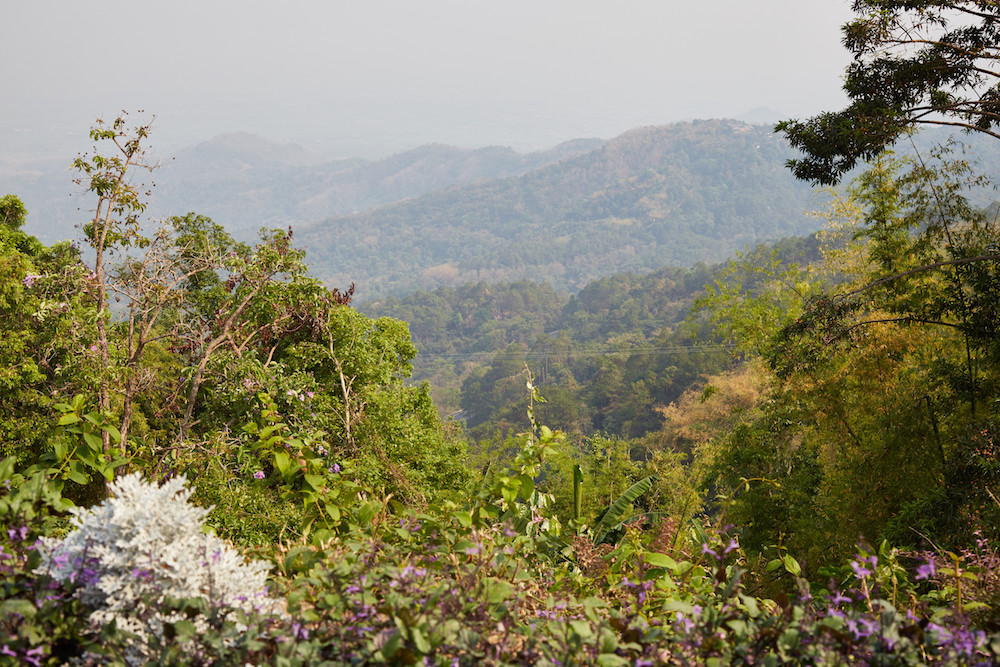
Overlooking the nearby mountains of Myanmar
The KMT helped sustain themselves with the lucrative opium trade. They controlled the region with an iron fist, forcing local villagers and hilltribes to meet strict quotas for poppy cultivation. To make matters more complicated, they also were directly supported by both Taiwan and the USA, regularly being airdropped weapons and supplies. And they were also given logistical and material support from pro-US Thailand.
Despite an unsuccessful attempt to retake Yunnan province in 1951, the KMT remained in Burma. In contrast to their military shortcomings, their drug business was flourishing. Most of their opium was exported to Thailand in exchange for goods and weapons.
After relentless lobbying to the United Nations to get the KMT to leave, the Burmese government finally got the Nationalist military to dissolve in 1953. It was mostly for show, though, and KMT members would remain in Burma all the way into the early 1960’s until skirmishes with the Burmese army would force them out for good.
The former Kuomintang members were welcome in Thailand, however, as the government saw them as a necessary ally to help fight Communist insurgencies along the country’s borders. In fact, they helped fight for Thailand well into the 1980’s.
And as long as the KMT remained in the region, the Golden Triangle drug trade continued to flourish. The KMT maintained profitable opium businesses in places like Mae Salong and Doi Tung, getting tribes like the Akha to cultivate illicit poppy for them.
It wasn’t until the defeat of the Communist insurgents fighting against Thailand that the KMT could finally disband, with former members being granted Thai citizenship. And with the opium trade no longer seen as a necessity to fund the Kuomintang, Thai authorities could finally start cleaning up the region in the late 1980’s – both literally and figuratively.
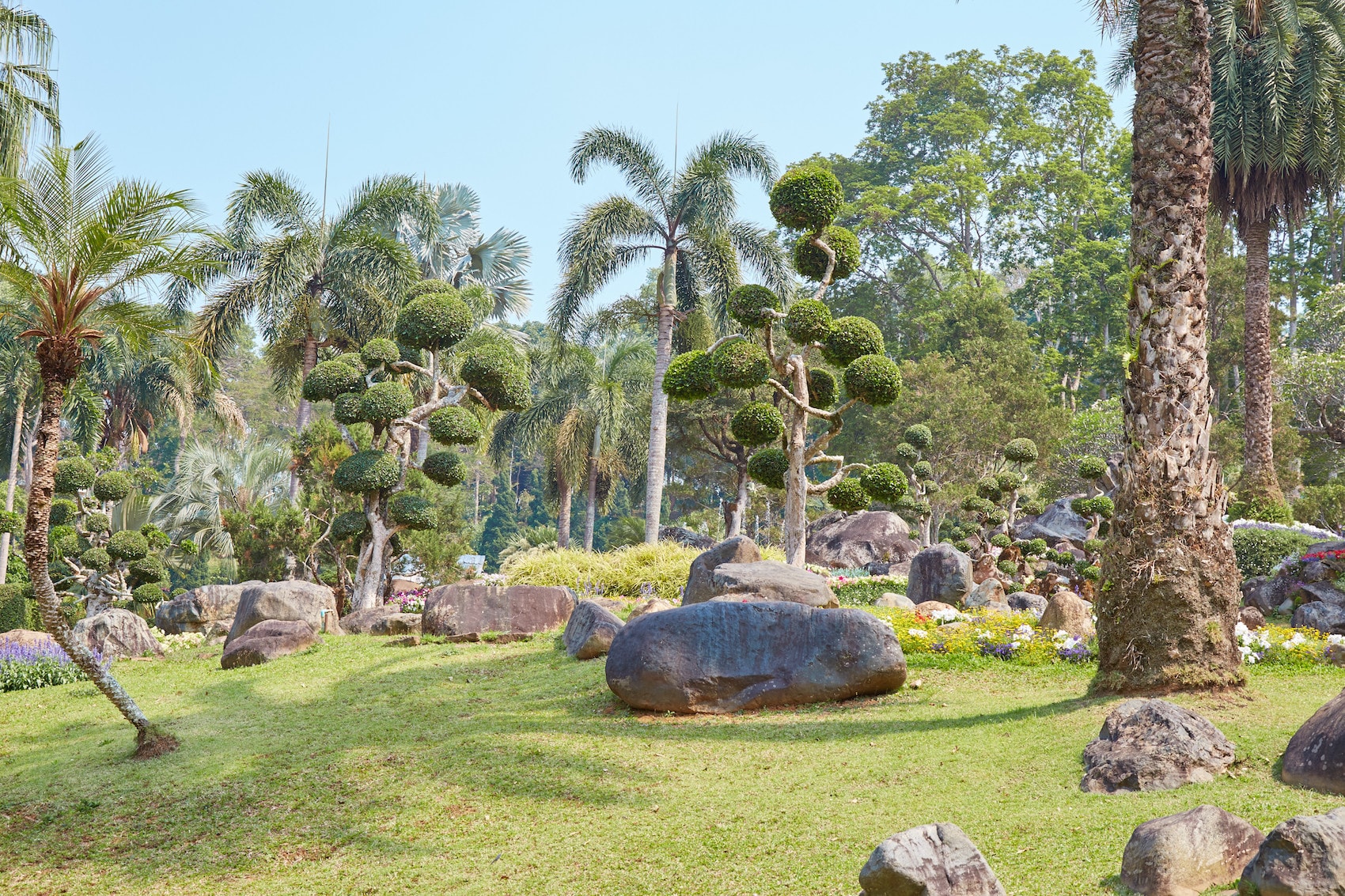
The Royal Agricultural Project
Work to develop the Doi Tung area began in 1988. The project was spearheaded by Princess Srinakarindra, often affectionately referred to as ‘the Princess Mother,’ and her Mae Fah Luang Foundation. The Princess Mother, mother of Thailand’s longest reigning monarch King Bhumibol Adulyadej (Rama IX), was a lover of nature and plants. Also having taken a special interest in the area’s indigenous cultures since the 1970’s, the Royal Agricultural Project was started as a way to provide the local hilltribes with new ways to earn money that has nothing to do with opium production.
Today, the local Akha people grow coffee and macadamia nuts instead of opium, and they also sell their crafts, tea and other goods near the area’s entrance. “Doi Tung” has even become its own fashionable brand, with trendy shops in Chiang Mai and Bangkok selling high-end crafts, pillows and even ties to customers around the country.
But has the project fully enabled the Akha people of northern Thailand to become self-sustainable? There are claims that some villagers remain reliant on government handouts, while opium production may also still be taking place in certain pockets of the region. But compared to what used to be going on at Doi Tung, the Royal Agricultural Project has overall been a resounding success.
Around The Gardens
You don’t have to know much about the area’s tumultuous past to appreciate the vibrant Mae Fah Luang Gardens. The area is not easy or cheap to get to (see below), but once you finally make it, the relaxing environment will help you forget the long journey there.
If you’ve spent a reasonable amount of time in Thailand, you’ll quickly notice that there’s something a little bit different about the plants on display. That’s because many of them are European or North American in origin. It was the Princess Mother’s intention for Thais with no means to travel abroad to be able to come and see temperate plants for the first time.
In addition to the wide array of plants, you can also encounter things like a fountain and a little bamboo labyrinth, giving the gardens a playful atmosphere. And for an extra fee, you can also try the ‘Doi Tung Tree Top Walk’ which allows you to view the area from above.
The centerpiece of the sight is the “Continuity” sculpture by Misiem Yip-In-Soi. Comprised of young boys forming a tall pyramid, the work is said to symbolize the continuity of Akha culture and of the development project itself.
Just next door to the gardens is the Doi Tung Royal Villa, which combines the styles of both Lanna (northern Thai) and Swiss architecture. Inside you can see the area where the Princess Mother lived and slept, while the veranda provides even more views of the nearby Burmese mountains.
Members of the Royal Family do still occasionally come to visit and they even have their own special entrance. Upon entering the villa, an audio guide is available in different languages, but some of the explanations tend to drag on for a bit too long.
All in all, Doi Tung’s Mae Fah Luang Botanical Gardens are well worth the visit for anyone coming to the Chiang Rai region – even if you’re not normally the type who goes to visit gardens. In addition to the gardens and villa, the mountain is also home to Wat Phra That Doi Tung Temple which dates back to the 10th century.
Mae Fah Luang Gardens
- 90 Baht
- 6:30 - 18:00
Royal Villa
- 90 Baht
- 7:00 - 17:30
Mae Fah Luang Arboretum
- 90 Baht
- 7:00 - 17:30
Combined Ticket
- 200 Baht

Additional Info
BUS: Most people arrive in Chiang Rai via Chiang Mai. The ride is around 3 and a half hours and buses are operated by a company called Greenbus. A couple of buses leave every hour and there are different classes, with the most expensive buses going for just 260 baht. There’s not a major difference between the different classes so just pick whatever bus leaves at the time most convenient for you.
Tickets are technically available online, but the Greenbus web site is confusing and many people have complained that their bookings did not get logged in the system, even after payment. Therefore, you might just want to show up at the Chiang Mai Arcade bus terminal (across from Central Festival Mall) and purchase your ticket in person. There are also some places to purchase Greenbus tickets in Chiang Mai’s Old City.
There are two bus stations in Chiang Rai. If you’re staying somewhere near the city center, be sure to get off at the second stop, and not the newer bus station in the outskirts of the city.
PLANE: Chiang Rai also has its own airport which is serviced by many of the local and budget airlines in the region, such as Air Asia and Nok Air. A taxi from the airport to the city center costs 200 baht.
Doi Tung is quite a distance from central Chiang Mai and there is, unfortunately, no direct means of transport from the city. One option would be to hire a private driver for the day which costs around 15,000 Baht. You could see Doi Tung in addition to some other sites around Chiang Rai for a decent value.
If you’re only interested in getting to and from Doi Tung from the city, a ridesharing service like Uber or Grab is the best way to go. Most drivers will be happy to take you up there, but bear in mind that not all drivers will know exactly where they’re going. Furthermore, cell phone reception will likely cut out on your way up there. While phones and 4G work fine in the actual gardens, that won’t help your driver find his or her way.
A single Uber ride from the city costs about $20 USD (or around 660 baht), which is no small sum for Thailand. Since it’s such a far distance your driver will very likely wait for you to drive you back. At around $40 round trip, this is not a cheap excursion, but the beauty of the gardens and scenery help make up for it.
Of course, you could also rent a motorbike and ride to Doi Tung yourself, but as mentioned above, you may not be able to use your smartphone once you start ascending the mountain and signage isn’t great.
Doi Tung is a considerable driving distance from Chiang Rai, so you might as well look for accommodation in the city center. This will give you access to the bus terminal and interesting temples like Wat Phra Kaeo, the Clock Tower and the night bazaar. Chiang Rai’s other main destinations, the fascinating colored temples, are on the outskirts of the city but staying in the central area still makes the most sense.
There are an abundant amount of options on hotel booking sites like Booking.com and Agoda as well as on apartment rental sites like Airbnb.

Pin It!


